Before brewing can start, the malt has to be ground. We decided to use a hand-operated mill known as a quern. Though watermills were widespread in sixteenth-century Ireland, we do not know where the malt for Dublin Castle’s beer was processed. Malt querns are mentioned in lists of goods of Irish households and they would certainly have been used for smaller residences to grind what they needed. For the volumes needed for this project, working by hand also allowed us to control and tweak the process. We had access to three querns but found the one with a ‘pudding stone’ design was most suitable. The malted grain was poured into a hole at the top, the stone was turned by a handle, and the grounds were collected at the bottom.
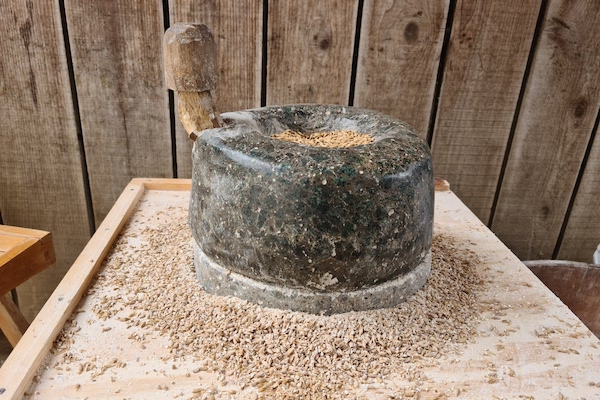


A coarser grind is needed for brewing than for making bread. From Robin Appel of Warminster Maltings, we learned that modern brewers typically aim for roughly 20% husk, 70% grist, and 10% flour. By adjusting the stones, we achieved a reasonable blend that did not clog up the brewing equipment.
Our recipe called for one bushel of bere malt and one bushel of oat malt, the latter arriving to the museum already flaked. Before adding to the water, the ground bere and flaked oats were blended. A bushel is a volume measure, calculated using a container of the same name (right). When full, the bushel should be level at the brim, which was checked by ‘striking’ across the top with a flat stick.
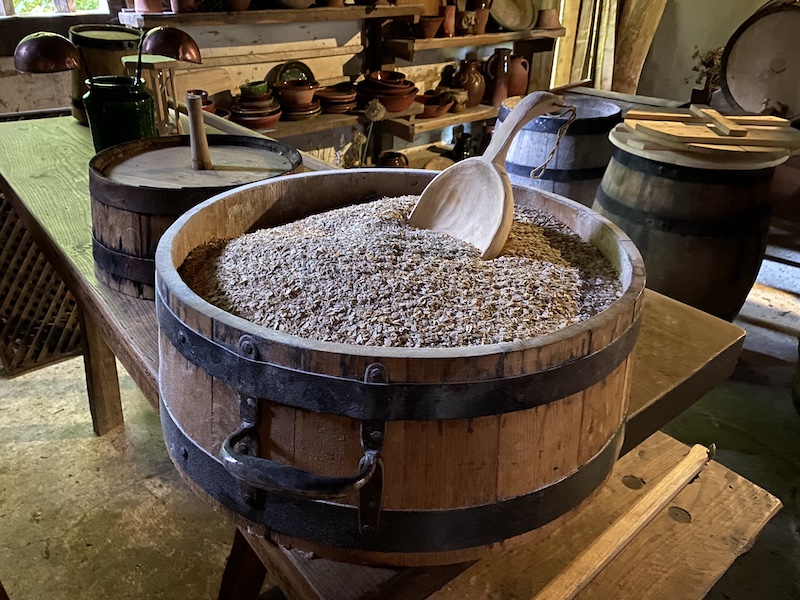
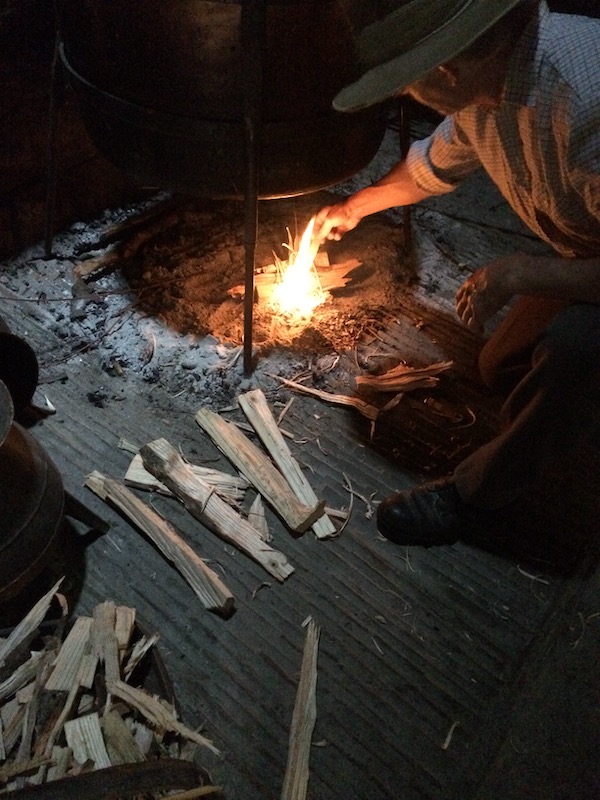
On each brewing day, the fire was lit just after 8am. This was set under the copper boiler filled with water. The water was brought to a boil, when some of it was used for ‘scalding’ or sterilizing the mash tun and buck. The temperature was then allowed to drop until it was possible to see one’s face in the reflection. These contemporary instructions for judging temperature were doubled-checked with a thermometer. The water was ready at around 60–70 °C.

The first wash of the grains was the most labour-intensive moment in the day. One person ladled the hot water from the copper into the mash tun, a gallon at a time. Another steadily scooped in the combined two bushels of bere and oats. A third person used a paddle to stir gently and break up any lumps. At this stage, around 25 gallons were added to the tun.
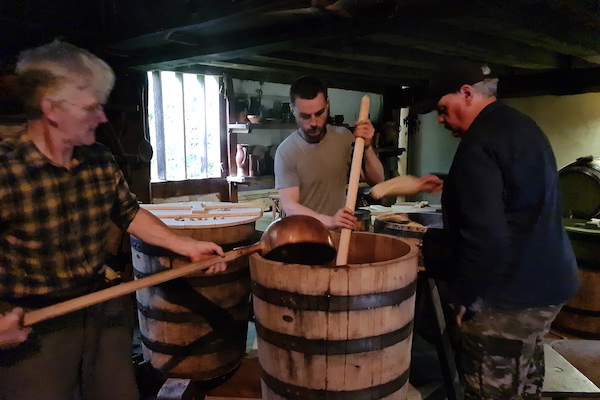
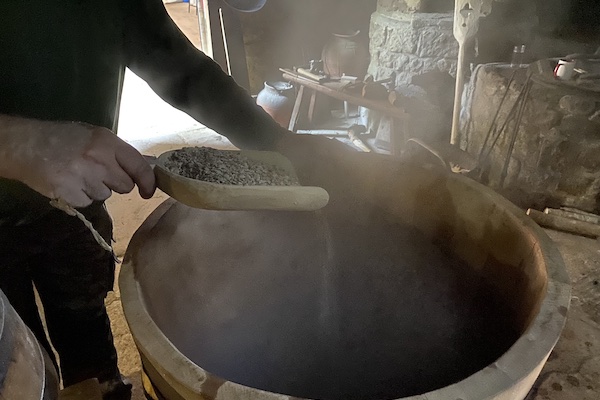
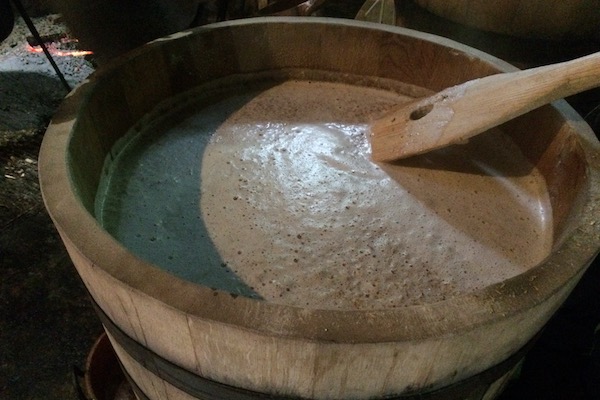
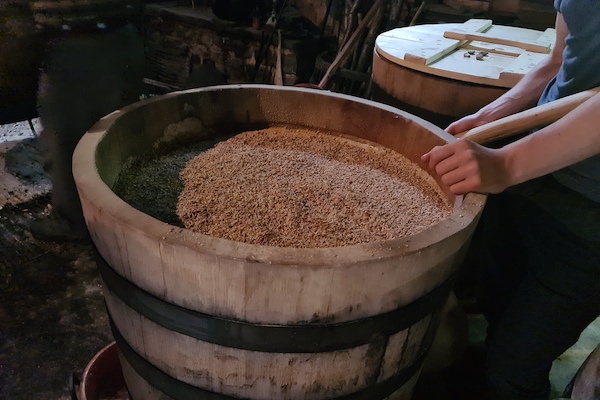
A small amount of the blended grains was reserved and, when the mash tun was full, scattered on top to make a cap. After an hour, a ladleful of wort was tapped off from the bottom and poured back over the grains and liquor, using a paddle to break up the stream.
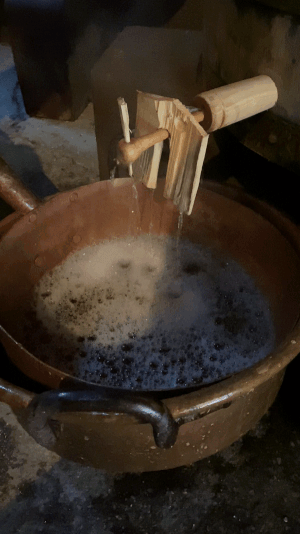
After a further half an hour, the wort was ready to drain. The tap was eased out of the tube to allow the sugary liquid to pour into a ladle. As contemporary brewers recommended, the speed was kept slow — they described it as running like a straw. This avoided spillages and waste but also avoided breaking up the settled bed of grains inside the mash tun. Along with the wilch on the end of the tap, the grain bed filtered the wort, which despite what seemed a basic system ran pleasingly clear. The foam on top is a sign of sugariness.
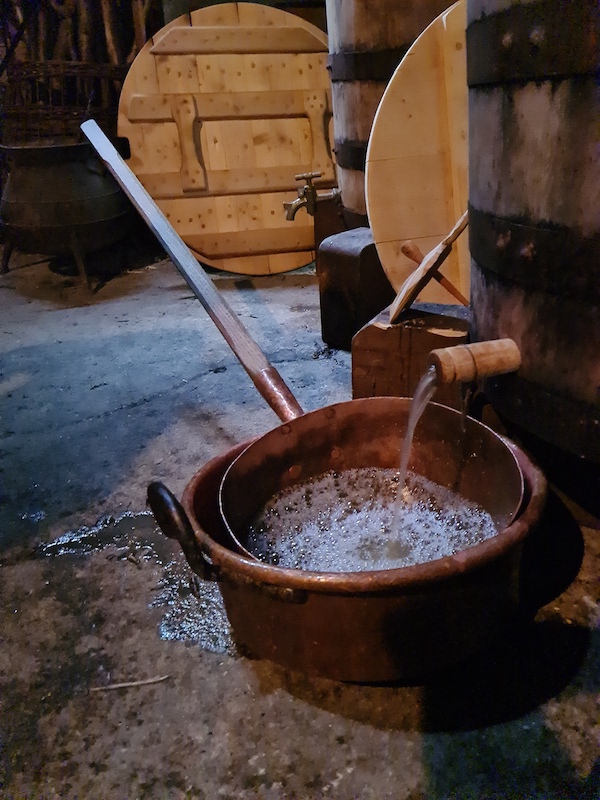
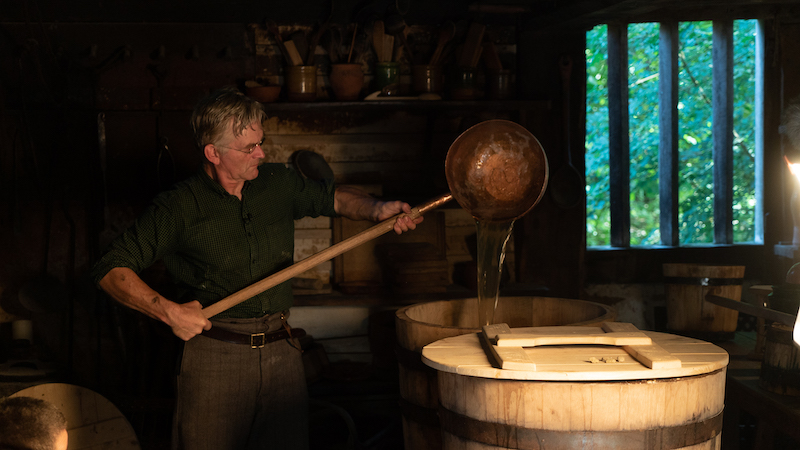
When the mash drained well, this first wash returned about 19–20 gallons of wort. This was stored in the buck. If we were making a strong beer, this is what we would ferment. Because we were recreating an ordinary or middle beer, we carried out a second wash, adding another 10–15 gallons of hot water to the grains in the mash tun (the amount depended on how much wort was initially received, as we were aiming for 25–28 gallons of wort at the end). The mash was left again for an hour and a half, with a gallon of tapped-off wort poured over thirty minutes before the end.
After the allotted time, the second wash was drained out and poured into the copper, along with the wort from the wash which was emptied from the buck. The combined wort was brought to the boil. We weighed out the hops into linen bags. When the wort was boiling, the hops were added and left to boil for another hour and a half.
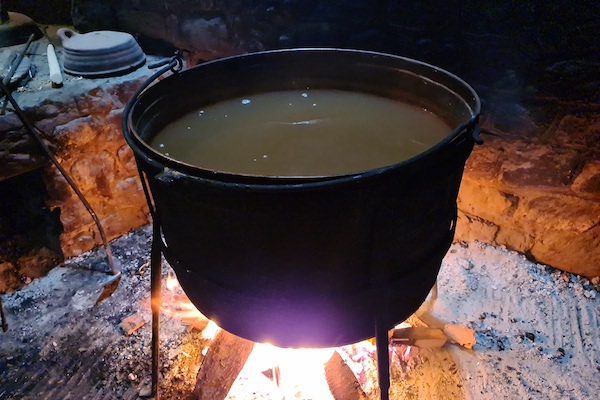
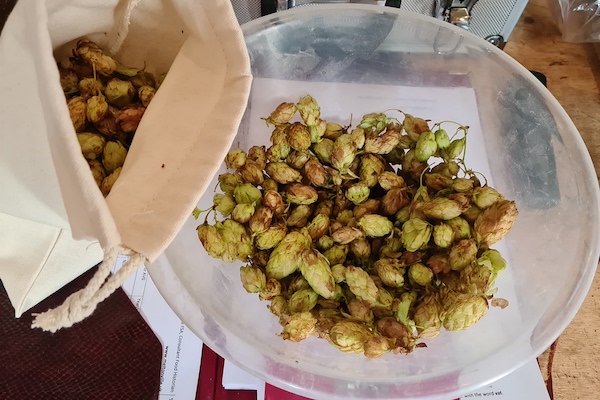
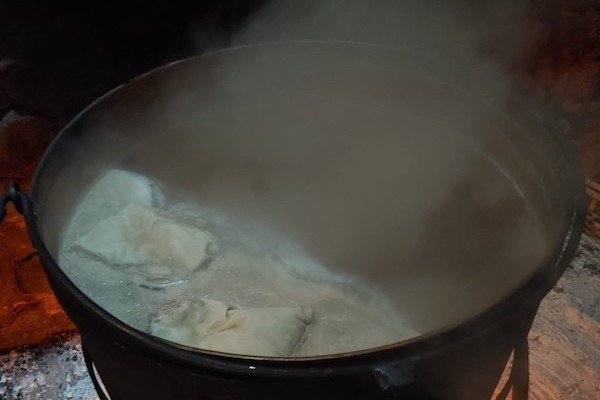
Finally, the boiled wort was ladled into buckets and transferred to one of the barrels for fermentation. In many sixteenth-century breweries, systems of wooden gutters would have been set up. With the wort left to cool overnight, that day’s work for the brew was complete.


The following morning we fed the starter culture of the yeast, prepared by microbiologist John Morrissey (pictured below left), with a small quantity of wort. Once the barrel’s temperature had dropped to around 20–30 °C – contemporary instructions suggest that a dipped finger should feel neither hot nor cold — the yeast was ‘pitched’. The preparation was poured into the barrel and stirred vigorously, providing the yeast with plenty of oxygen to start working.
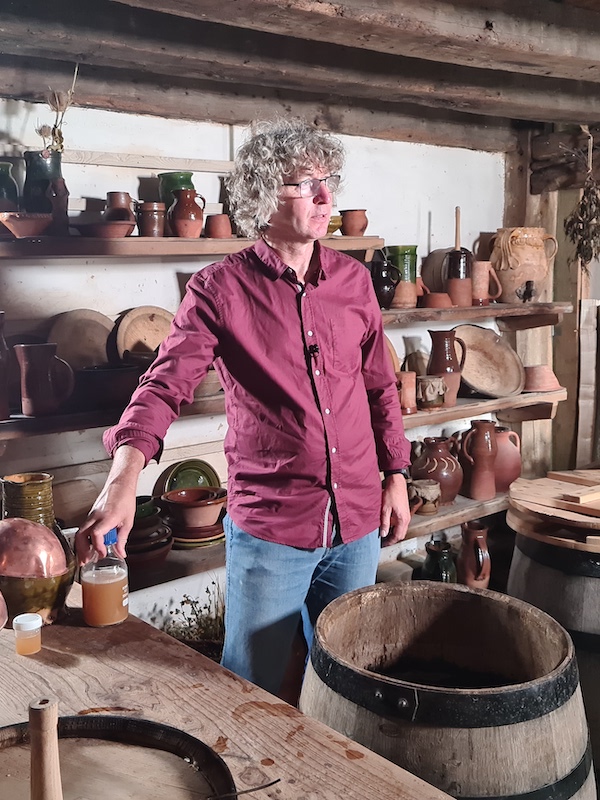
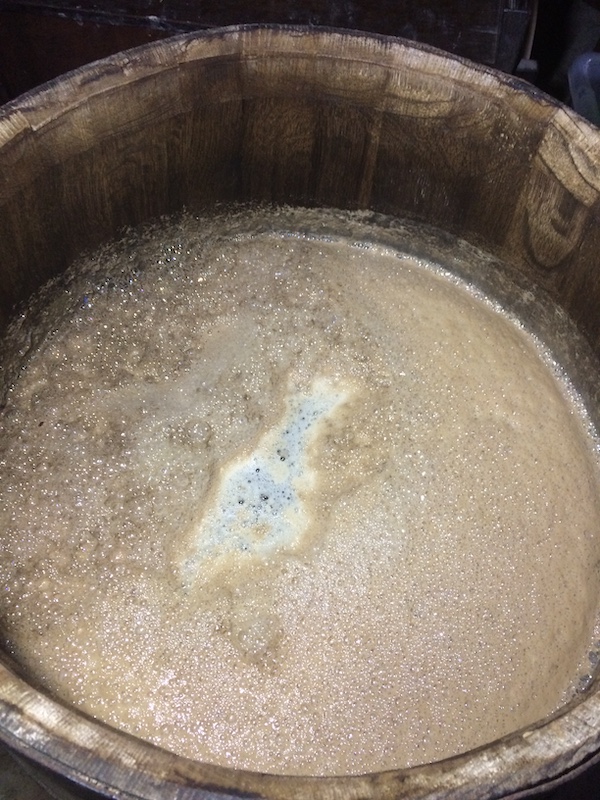
With the Dublin Castle recipe and the historical yeast (NCYC 1026), the fermentation started quickly. Darker bubbles (see left) began to appear within 24 hours. The barrels smelled distinctively of beer, with some floral notes. Putting an ear to the barrel, it was possible to hear bubbling. Fermentation continued for between five and seven days, at which point the exhausted yeast sank to the bottom. Lastly, the finished beer was decanted into casks for storage.

